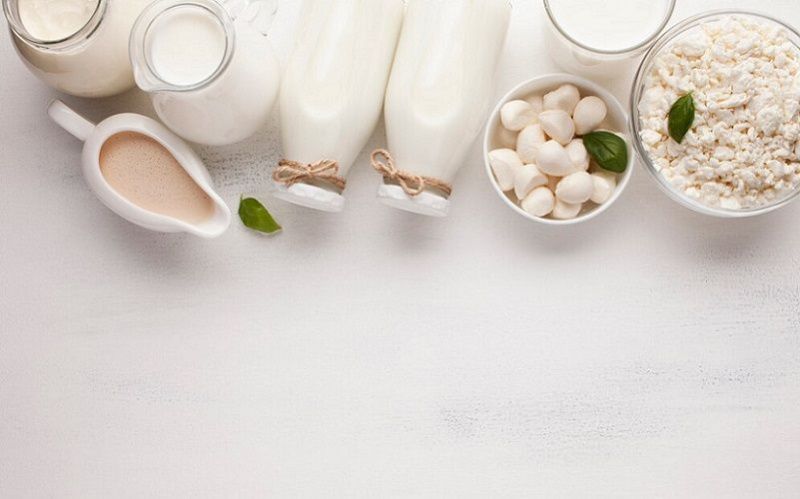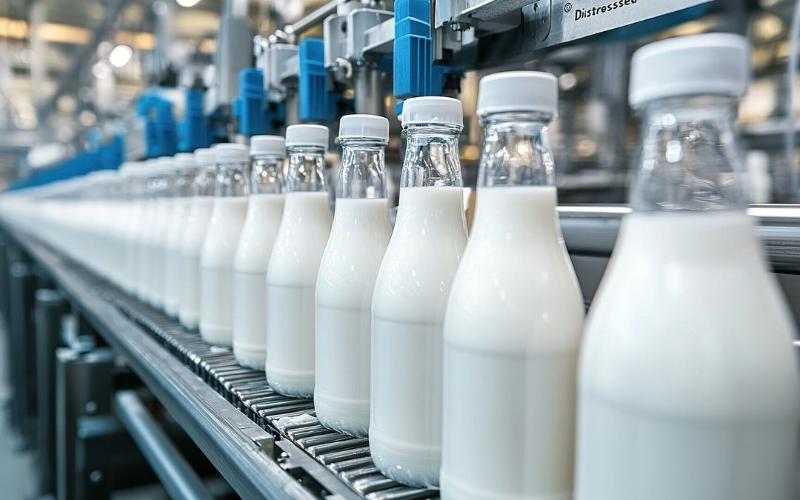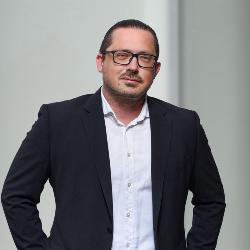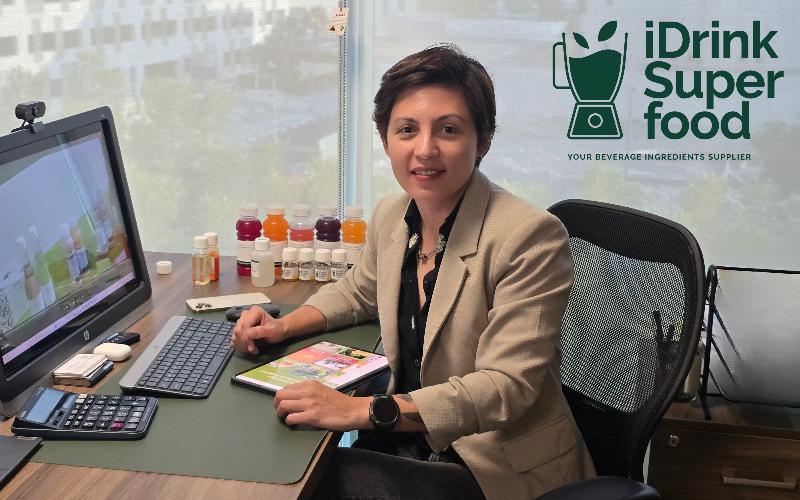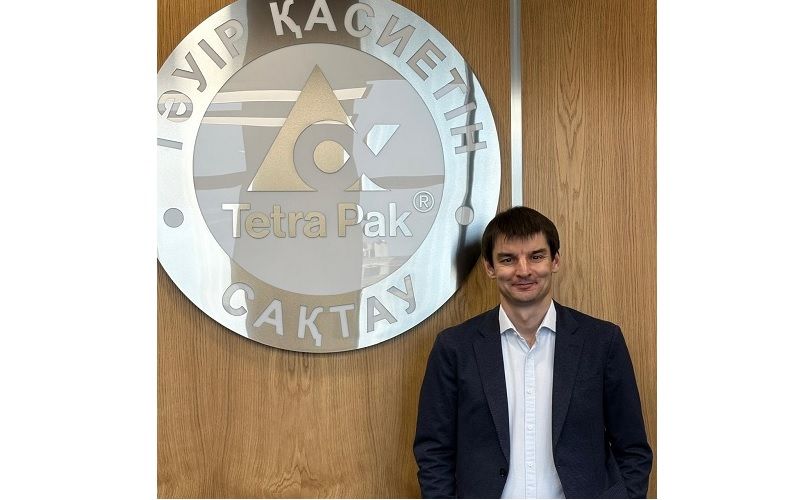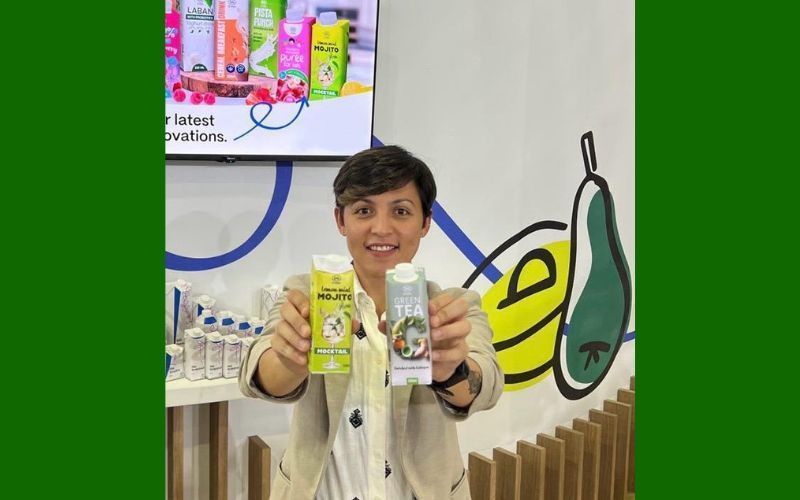Camel milk can become a “trick” of Kazakhstan and bring the country to the international dairy market with exclusive products - Alexandra Grigolova

Alexandra, tell us about your company.
– We have our own workshop for processing goat milk, we ourselves are livestock producers of milk and its processors. At the moment, our product line includes pasteurized goat milk, thermostatic and drinking yogurt, ayran, kefir, cottage cheese, baby curds, goat milk sour cream and 12 types of cheese.
We have two officially registered trademarks. One is engaged in the production and sale of family segment products: from milk to sour cream and is called “ Zheti lak ”, translated as “seven little goats”. We are currently selling in our region. Demand for some products exceeds supply by almost five times, especially in winter.
We also now purchase camel milk from our neighboring farmers, also regional, and are actively engaged in the production and development of technologies for cheeses made from camel milk.
What made you interested in camel milk?
– Mangistau region is the region with the largest concentration of camels in Kazakhstan. While talking with our farmers, we heard such a problem that, unfortunately, they do not know where to sell their milk. There are a lot of raw materials, but there is no processing. They themselves do not know how to produce anything except the traditional shubat and kurt, and also the traditional sweet balkaimak, because they lack the competencies. In addition, this requires certain investments, equipment, etc. Therefore, we wanted to support our local farmers: we started purchasing milk from them at market prices and producing something of our own.
Where did the idea come from to develop your own patent for the production of cheese from camel milk?
– I am a master cheese maker, cheese is my special love, therefore, testing camel milk from different manufacturers, there was a desire to try something more complex than fermented milk products, and we began to test cheese technologies. In fact, there is practically no technology for cheeses made from camel milk, and those that exist are mostly local or private technologies that are a trade secret, so we had to develop our own taking into account the characteristics of local camel milk. It is different from cow's and goat's milk and behaves completely differently. Therefore, a lot of work has been done, based on the research of our Kazakh scientists, plus the research of scientists from the French University of Montpellier in the field of camel milk. Thus, we have created three of our own technologies, which are now being patented. One of the cheeses was presented by us at the international competition of cheeses and dairy products Mondial du fromage, where it won a silver medal.

In which regions do you sell your products?
– We work under our own brand with several manufacturers, supply them with our cheeses, and they package them in their own packaging. And so we have the TERGEN trademark, it was developed specifically for export products. We expect our first export deliveries of camel cheese in February. We submitted the cheeses to a European laboratory. We are waiting for results from it and we will be ready to go to Europe with these cheeses, because there is demand.
Are you planning to enter the regions of Kazakhstan?
– We are planning, of course. First of all, we want to provide our population with our products. Export is a parallel scheme of our development. Goat and camel cheeses will already be actively sold in Astana and Almaty after the New Year. We have very few goat cheeses in general, only local small farms produce them, and no one makes them on an industrial scale, and there are no camel cheeses at all, so we are, in a way, pioneers.
Why are people who deal with camel and mare's milk more focused on the foreign market?
– Of course, we would like our products to be on the shelves of all stores in our country and for Kazakhstanis to eat fresh, high-quality, national, traditional products as much as possible. But the majority of the population understands that what is sold in the store is not entirely natural. What you bought from an apocalypse who just milked it is as natural and healthy as possible. Unfortunately, this is also a lack of awareness and knowledge.
In fact, what is sold in stores has passed all sanitary checks and is 100% safe. Many people believe that pasteurization is boiling. We tell everyone what pasteurization is, that it is not boiling, that everything useful is preserved, everything bad is killed.
Many manufacturers have a primary focus on the export market, because they have come to this a long time ago and everyone understands it perfectly. Ours need to be explained, proven, and popularized as much as possible. We receive little information; the entire educational function falls on the shoulders of the manufacturer. Well, and, of course, the cost of the final product is sometimes “biting” due to the high costs borne by the manufacturer himself.
What other problems exist in this market?
– The first problem is the lack of large producers and processors of raw materials, the second problem is the incompetence and lack of education of livestock farmers on how to properly produce these raw materials, how to process them, so the quality of milk is lost.
We have volumes, even taking into account private household plots and peasant farms, but not enough processors. In the Turkestan region, as far as I know, there are still enterprises that process camel milk and produce fermented milk products, but in Mangistau there are practically no such enterprises. This is due to the fact that factories do not want to take risks working with low-quality raw materials, plus there is also the transport component, because basically all this milk is concentrated in personal farmsteads and farms.
More on camel milk. We have technical regulations of the Customs Union and general standards for milk, but they are focused mainly on cow's milk with all its additions, etc. If we are talking about the widespread use of camel milk, we need certain standards that will take into account the specifics of working with camel milk.
Both camel milk and mare milk have always remained in the shadows, even though these are national products, they are not as widespread as cow milk. In our country, everyone only talks about the development of dairy cattle, forgetting that cattle have never really developed in Kazakhstan, since ancient times the dairy animal for the Kazakhs was the mare and the camel, cattle were mainly in the north of Kazakhstan.

Why is cow's milk more popular than camel's milk in Kazakhstan? What is this connected with?
– Cow’s milk is three times cheaper than camel’s milk and is much easier to process, because our equipment is mainly designed for cow’s milk. As for camel milk, firstly, it is necessary to reconfigure the equipment, the same separators, purifiers, etc., because the structure of camel milk is different. Conventionally, when working with camel milk, you must have some multifunctional equipment. No plant will do this with small volumes. Whatever you say, the amount of cow's milk on the market is many times greater than the amount of camel's milk. Any plant must be sure that it will not be left without raw materials.
At least one processing enterprise should be created per region, near some large city where there will be sales, and it should be engaged only in monoproduction from camel milk, taking into account its processing features, selection of technologies and equipment. Camel milk contains only about 25 strains of native microorganisms and yeast, and this certainly plays a very important role in the production of products, because not every production technology can be adapted from a cow to a camel.
It turns out that in Kazakhstan it is difficult for farmers and camel milk producers to develop their business?
– In general, farming is difficult everywhere. Processing enterprises are, of course, needed. A farmer can produce as much as he wants, but if he has nowhere to sell it, everything will have no meaning. There are two ways: either there are processing enterprises, or you create a processing enterprise yourself.
How much will it cost to create your own processing plant?
– Let’s say you have nothing – a bare plot of land. Then only construction with communications, in accordance with all sanitary standards, technical regulations and food safety system, purchase of equipment, if we are talking about the volume of processing of at least 5 thousand liters per day, creation of a wage fund, taxes, investments in development, etc. , comes out to about 120-150 million tenge.
And you need, of course, to remember about the availability of raw materials, how and where to deliver them from: buy from the population or set up your own commercial dairy farm, which will provide raw materials.
That is, government intervention is required to resolve most issues in this industry?
– In fact, there are now many government support measures, but not all of them are used effectively. Instead of supporting developing, high-quality, good farms, we spend a lot of money in the wrong places. For example, a farmer applied for preferential loans and wants to buy 20 cows. And he writes in his business plan that he will receive milk and deliver it to the factory, takes the money, buys these 20 cows, six months later slaughters them for meat and that’s it: no milk, no money allocated for the development of dairy farming.
It is important to provide this support to specific, existing farmers who have already proven themselves, have living contracts, a living basis. In addition, it is a common practice in our country that any loan for farmers requires collateral. Not all banks take land and real estate in villages as collateral.
Subsidizing the interest rate on farm loans also often occurs with a delay, and the farmer has to repay the loan at 24%, rather than 6%, while waiting for it to be subsidized. This is already an obstacle to the farmer pouring money into his farm.
Yes, and the Ministry of Agriculture itself sometimes does not fully understand the specifics, especially what is happening in the dairy industry of Kazakhstan. In the news, someone from the Ministry of Agriculture begins to talk about some 80% supply of milk to Kazakhstan, although we all know very well that, God willing, we are provided with 25% of it. Perhaps the issue here is not one of competence, but one simply wants to look better and this is not always beneficial.
What measures would you suggest to solve the problems?
– First of all, it is necessary to transform the successful experiences of countries that have passed this path and are successfully developing. Use scientific research in both livestock and dairy production.
We are fighting to create large commercial farms; huge amounts of money are being allocated for this. I believe that it is also necessary to create local cooperatives that will work with farmers and improve their competencies. In this regard, the experience of Norway is very interesting, where the basis is small family farms, and farmers are financially interested in producing milk of the highest quality.
Many of our farmers do not know that when they produce milk and send it for processing, they have the right to receive a subsidy. Maybe it’s worth organizing some kind of dairy schools under the auspices of the Ministry of Agriculture or the same Chamber of Entrepreneurs “Atameken”, where farmers will be given a clear and understandable mechanism without “water”.
Basically, all our support is always directed to large manufacturers, to large market players, because they provide the bulk of all these products. Small peasant farms are of no interest to anyone, and no one is involved in them.
We need internal regulations that will allow us to clearly and transparently build this chain: from production to the final product. So far, the production of both camel and mare’s milk is all at the level of national standards, which are also not fully understood.
Many farmers perceive the Technical Regulations of the Customs Union as another reason to deprive them of income. They do not understand that these are certain standards that lead primarily to safety and high quality products. All this is done by the processors themselves, explained and proven to farmers. First of all, it is necessary to increase the competencies and knowledge of farmers. And plus there is still no system for stimulating the desire to produce a product of the highest quality.
What incentive methods can be applied in this case?
– If, conditionally, factories said: “Guys, we will take low-grade milk for 200 tenge per liter, and high-grade milk for 300 tenge,” farmers would have a direct financial interest in fulfilling their duties more efficiently. In our country, whether you produce excellent milk or whether you produce terrible milk, everywhere they will take the same from everyone. The farmer has no incentive to produce better quality milk.
For example, in Norway the lowest price for milk is 7 crowns, which is about 280-300 tenge per liter. The higher the quality, the higher the price they receive when donating milk. And their quality is determined not only by somatic indicators, but also by protein, fat, and density. That is, the farmer is directly encouraged to produce high-quality milk, the highest grade, because his income depends on it.
For your part, are you also involved in education?
– I believe that it is important to pass on your experience and knowledge, without this there will be no development.
This year we were accepted into the International Guild of Cheesemakers, the first from the entire Central Asian region. The Guild's activities are aimed at developing the culture of cheese production and consumption, and the active development of the dairy industry as a whole. Now, in tandem with the Guild members, we are preparing a large training for all cheese experts in Kazakhstan, including experts from related industries - cooks, restaurant chefs, wine producers, solution and equipment manufacturers, component manufacturers, etc. There will be a large open event, absolutely anyone can take part, there will be sessions aimed at industry professionals and there will be general master classes, the entire program will take three days. We also plan to hold the First Open Competition of Cheese and Dairy Products as part of this event, where each manufacturer will be able to receive feedback from international experts.
After the New Year, we will also have our own course - “Dairy School”. It will be useful for farmers who want to develop specifically in milk processing. So that small regional enterprises and farmers receive the necessary competencies that would help them, for example, create cooperatives at their base and accept milk from their neighbors, making better products. Or create a cooperative for which you can buy that same robot milker, and the neighbors of a nearby house could come there and milk their animals. We want all this awareness and competence to develop, so that people understand why and why all this is being done. And so that, of course, our population receives a high-quality, and most importantly, safe and healthy product.
What are the prospects for alternative milk today, in your opinion?
– Today, the consumption of cow’s milk is being actively reduced all over the world against the backdrop of the fact that, unfortunately, the world’s population is not very healthy. Many people have allergic reactions and everything to cow’s milk, plus all these environmental issues. It is said that cows release a very large amount of unnecessary gases into the atmosphere. New Zealand is reducing its cow's milk production.
We are now talking about the need to develop large dairy farms, but if we analyze global consumption, now, on the contrary, countries are reducing the consumption of cow's milk. And against this background, just the same, camel and mare’s milk can get a very good competitive advantage due to their qualities, if, of course, you start putting all the knowledge, equipment, technology into it, pull up scientists who are well aware of the specifics of working with camel and mare's milk.
How do you plan to develop your company?
– We will introduce a new line of dairy products made from goat milk. More childish ones are curd bars, milkshakes, goat milk-based cheesecakes, because in our region we have a very large number of allergic and autistic children. Goat milk is mainly purchased from us by people with small children. Our main activity is with goat milk.
As for camel milk, we want to continue cooperation in terms of cheese production, since we already have such developments and achievements. We are ready to advise processing enterprises, maybe even create new products with them.
I consider this a “trick” of Kazakhstan, which can shoot very well and bring the country to the international dairy market with exclusive products, so that not only dried camel milk is sold here, but some high-value products such as cheeses or other complex probiotic dairy products , fermented milk products.
Photos: from the personal archive of cheese makers


